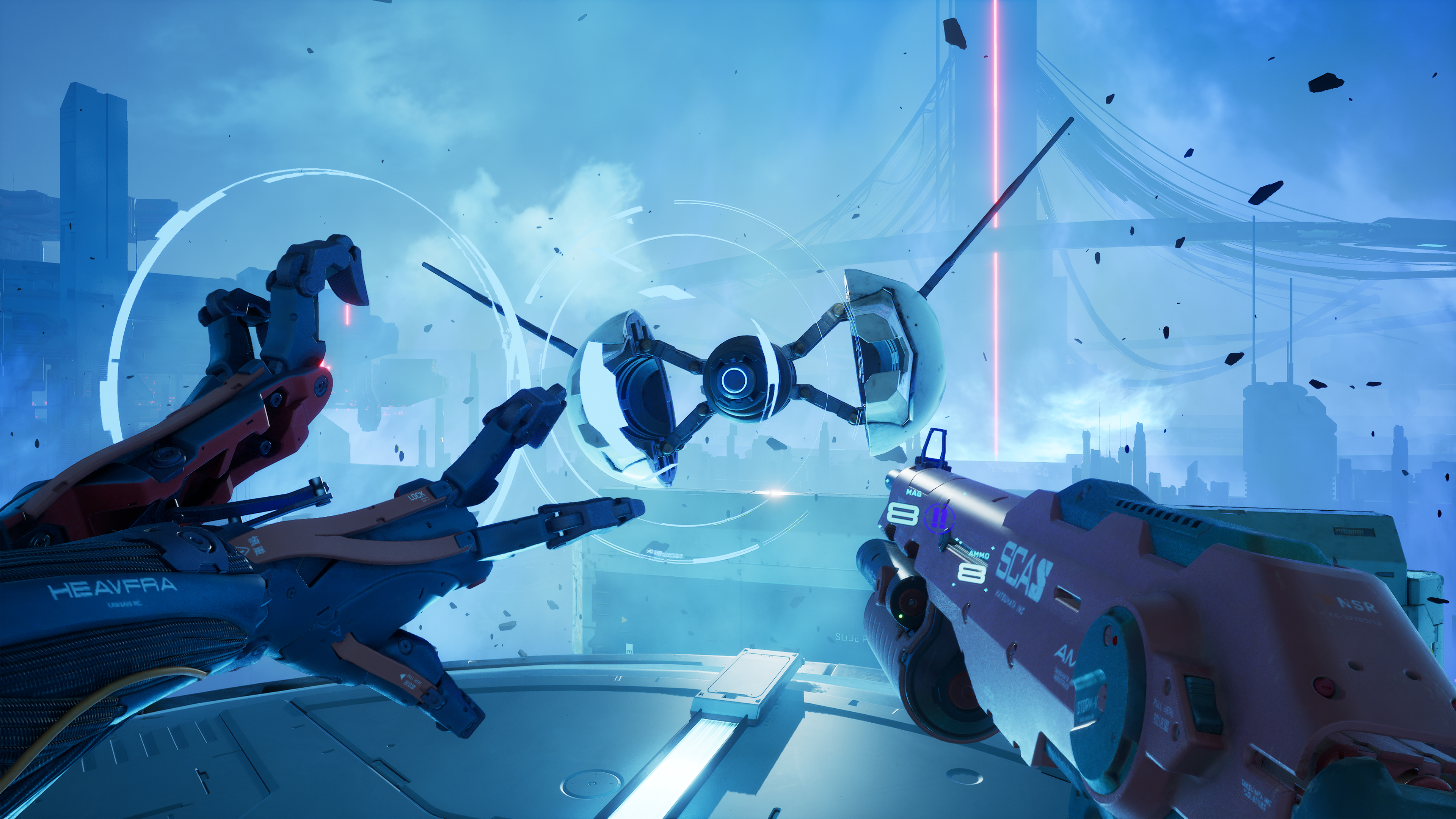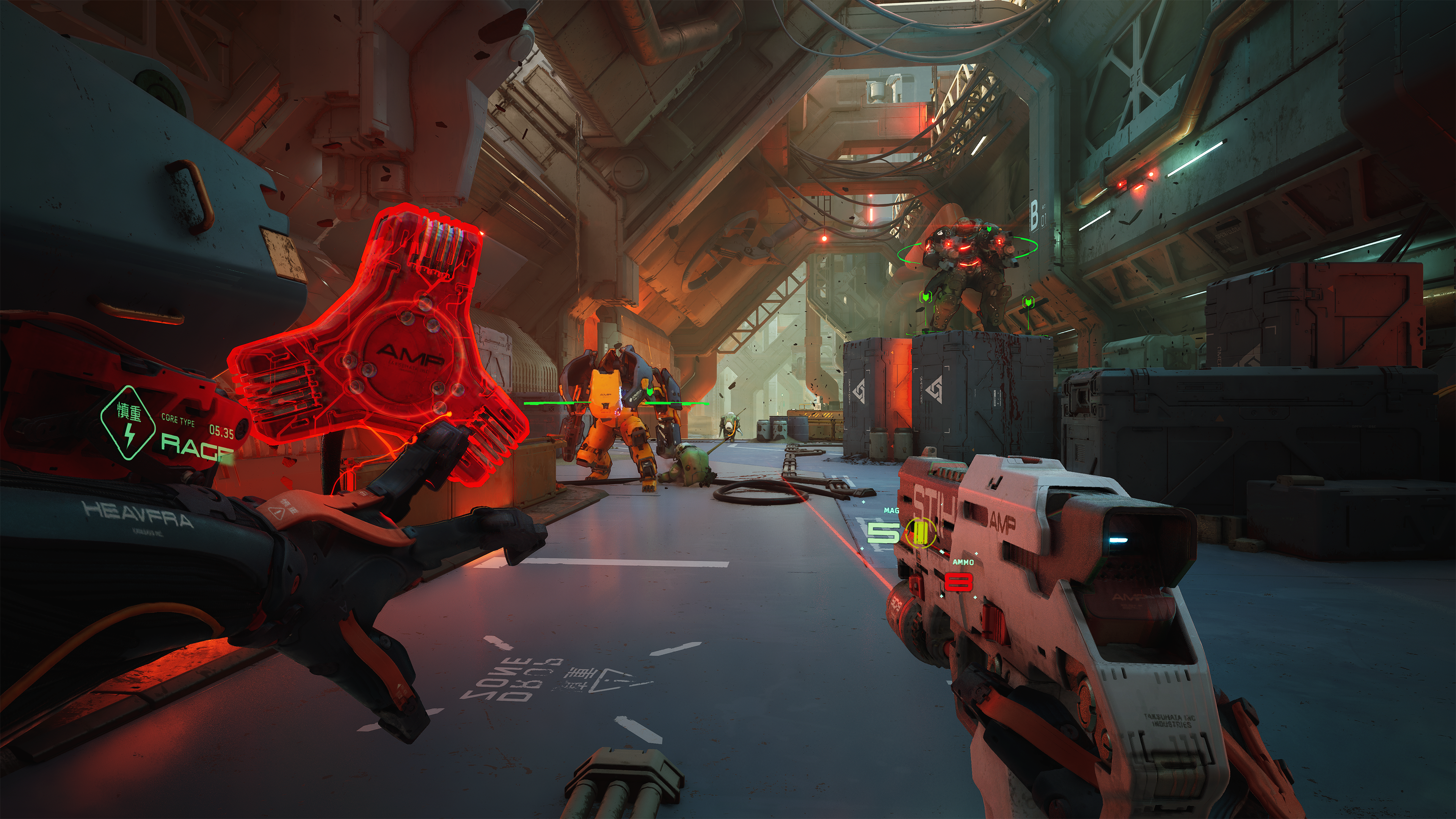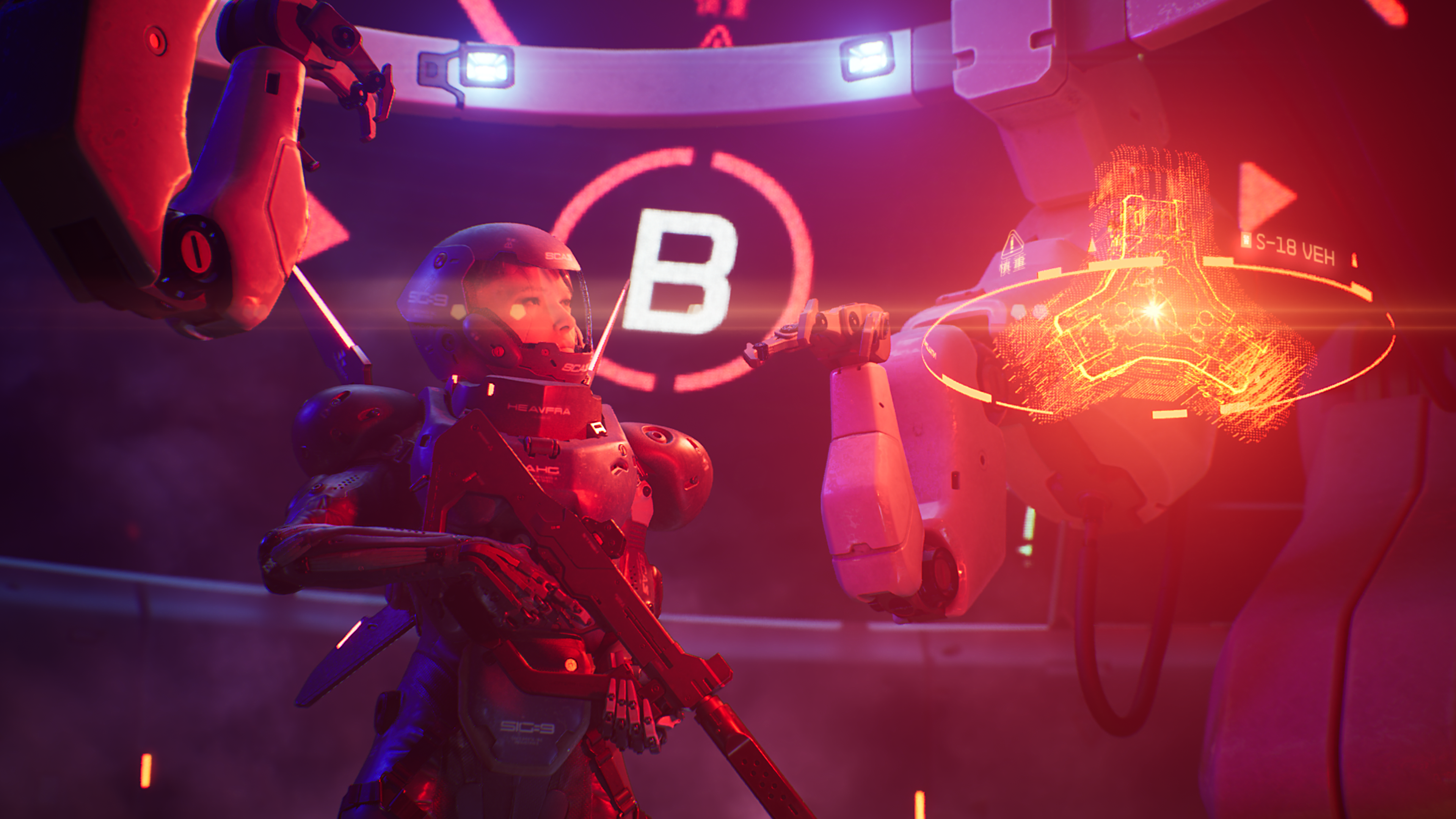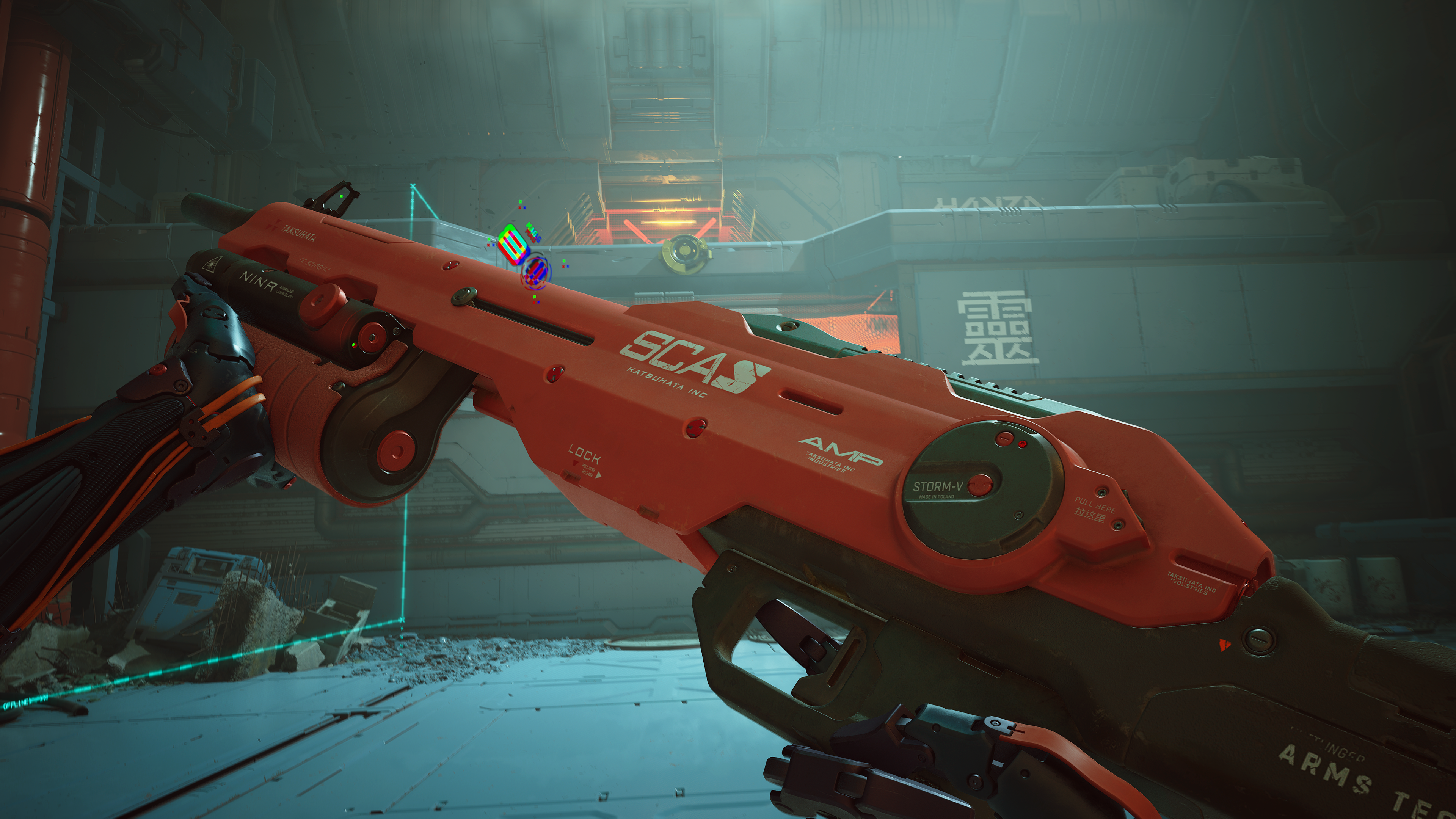Metal Eden is an exhilarating mix of Doom and Ghostrunner, and my hands-on preview left me craving more
How Reikon Games is crafting a gripping sci-fi shooter

Metal Eden was one of the most interesting reveals of the latest State of Play, which gave us just a small first glimpse at its dark sci-fi world. A high-octane first-person shooter (FPS) hailing from Ruiner developer Reikon Games, comprised of industry veterans from studios like CD Projekt Red and Techland, I was fortunate enough to go hands-on for just over an hour ahead of its official unveiling and was left craving more.
It's an eclectic blend of everything that made Doom (2016) and Ghostrunner great, with bombastic action combat that challenges you to experiment with a varied arsenal of meaty futuristic weapons, and a fast-paced parkour system where you’ll be running off walls and gliding down neon-lit rails between fighting arenas. Its flagship feature is the ‘Core’ system, which lets you rip out the glowing energy cores that power robotic foes and throw them in a devastating explosive attack or consume them for an instant health and power boost.
This is a small addition on paper, but alters the flow of combat in interesting ways. Some stronger adversaries have shields that are most effectively broken when you’re powered up with a core, encouraging you to consider when and how to best use them.
Run and gun

I also sat down with game director Karol Wieczorkiewicz, who was eager to tell me more about the game's biggest inspirations. “Of course, Doom (2016) was very important for us,” he begins, “but also Titanfall, with all the wall running and the quick movement options. We wanted to create this quicker, more aggressive, more vertical version of Doom.” The overall intention is “to give this feeling of being a powerful android, a machine which knows how to kill, which is very precise, and is constantly on top of the situation.”
With Doom: The Dark Ages set to arrive later this year, Wieczorkiewicz also stresses what sets Metal Eden apart. “The new Doom is going in a little different direction,” he explains, “it has more open sections, and the gameplay is a little slower, more grounded. Metal Eden is, I think from only seeing the video materials, more agile, faster.” He also highlights the difference in settings and aesthetics: “The world is also something we’re really proud of, you have the sci-fi setting with lots of machines and lots of inspiration from classic anime [...] we think it will feel totally different.”
One big area where Metal Eden differs from Doom, and also demonstrates its anime inspirations, is in the design of its robot protagonist, Aska.
She’s slighter than your traditional shooter protagonist, but still extremely capable. “We always wanted to create a game which has a protagonist similar to Motoko from Ghost in the Shell,” Wieczorkiewicz says. “We wanted to have this very strong female protagonist, who is very dangerous to the enemies [...] she’s using lots of heavy weapons, but at the same time she’s very, very light because you can jump very high and use lots of options for movement.”
Get daily insight, inspiration and deals in your inbox
Sign up for breaking news, reviews, opinion, top tech deals, and more.
An evolving threat

Aska’s expansive collection of weapons is another key reason why she’s such a formidable protagonist. I tried out a handful of guns in my time with Metal Eden, including a basic SMG with unlimited ammo that’s ideal for staggering smaller enemies before going in for a brutal melee finisher. There was also a punchy shotgun that had an impressive level of heft to it, plus a powerful Desert Eagle-style pistol. Slaying enemies rewards you with a currency that can be spent on weapon upgrades, which are much more than just your standard fare of small statistical buffs.
The upgrades I unlocked fundamentally changed not only the mechanics of each weapon but also substantially altered its overall appearance. “It was very important that with every change the player will make, they should get something big. Doing an upgrade to see, like, ‘plus 10 damage’ sounds boring but if you are upgrading the gun, the model should change and the gameplay options should grow.” This is paired with an expansive character upgrade system, which Wieczorkiewicz argues will “let you build your own type of Aska” through new combat abilities.
As Aska grows, so will the adversaries that you face. “We have, for example, a giant spider enemy similar to Half-Life, and he has a big eye with a laser, and you are fighting him in the desert. Another enemy we have is like a big bumblebee, [...] with rockets in his bag and he can float in the air,” he says. “But what is the most important is all the dynamics, the synergies between them. Every setup is creating a different scenario - all the enemies are pushing you in some direction. One enemy means you need to be more agile, you need to run. There is another one that can control a bigger space.”
Although my demo mainly focused on basic early ground enemies, the introduction of a flying drone with a laser did alter the cadence of fights - forcing me to dash from side to side to avoid incoming fire. I’m certainly interested to see how other kinds of encounters can further shake up the experience.
Glowing up

With its realistic, fully explorable 3D environments, Metal Eden seems considerably more ambitious than the heavily stylized world of Ruiner. This was a challenge for the studio, Wieczorkiewicz characterizing the FPS as “a whole different beast.”
“We needed to learn a lot and this is why we brought in some of the best people we know,” he continues. “Ruiner was created with this small 15-person team and we needed to learn how to produce something bigger, and how to cooperate with a bigger team. Adrian Kornecki, our executive producer, helped us a lot. He was a producer at Techland, and he brings lots of knowledge on how to build the proper structure and organization.”
Metal Eden is also a substantial step up in technological terms, leveraging the power of modern consoles and the key features of Unreal Engine 5 including Lumen and Nanite for lighting. “We have lots, lots, lots of geometry,” he explains.
“How big the vistas can be would be impossible to achieve in the past [console] generation with this smaller team. [...] Right now Unreal Engine 5 is giving the option for smaller teams to create bigger games and more ambitious projects.”
I can attest from my hands-on experience that Metal Eden is definitely promising in the visual department, with plenty of high-fidelity models for everything from the characters and environments to your weapons and gear, and some great lighting effects that really sell the futuristic world. I’m definitely excited to see more when Metal Eden arrives for PC, Xbox Series X, Xbox Series S, and PlayStation 5 on May 6, 2025.
You might also like...
- Monster Hunter Wilds producer discusses potential Nintendo Switch 2 port: 'we'd need to take our time to get to know the exact nature of the hardware'
- I had my shoes stolen by virtual drunks in Kingdom Come: Deliverance 2, and it might already be my game of the year
- I spent 10 hours with Cold VR and the shooter’s slow-mo action is incredibly fun - but it's a bit unpolished and buggy

Dash is a technology journalist who covers gaming hardware at TechRadar. Before joining the TechRadar team, he was writing gaming articles for some of the UK's biggest magazines including PLAY, Edge, PC Gamer, and SFX. Now, when he's not getting his greasy little mitts on the newest hardware or gaming gadget, he can be found listening to J-pop or feverishly devouring the latest Nintendo Switch otome.
You must confirm your public display name before commenting
Please logout and then login again, you will then be prompted to enter your display name.